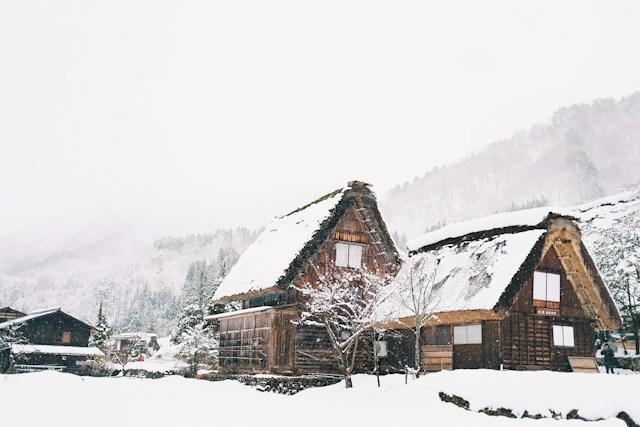When you hear snowfall totals on the news or from your local weather station, you might not know that actual snow weight matters more than just inches of snow. Ice, slush, and rain also weigh and must be considered when assessing your roof snow load.
Measuring the snow load on a roof can help to determine if it exceeds the load-bearing capacity, which could lead to damage. It can be done visually or by using a snow load calculator.Roof PitchRoof pitch significantly impacts snow load, and the more gradual the slope of your roof, the less likely it is to collapse. Many roof designs need to consider the crucial role of local weather patterns and other environmental factors that can cause uneven snow loads.A roof’s pitch is calculated by measuring the distance between the peak of your roof and its edge and then dividing that number by the run length of your roof. You can use a calculator to determine your roof’s pitch, usually expressed as a ratio like 3:12 or 7:12.A higher number means your roof has a steeper slope. A low number means your roof has a more gradual slope. It is essential to keep in mind when designing or evaluating existing roofs.Snow DensityDespite appearing the same, not all snow is created equal. The type of snow you have on your roof determines how much weight it will place on the structure. Some snow is powdery and light, while others are wet, wind-packed, or mixed with ice, impacting the snow’s density.Snow density is measured as a ratio to the thickness of water (1000 kg/m3) or expressed as a percentage of its total moisture content. However, it is a problematic measurable variable, significantly when the snow changes rapidly or is distributed sparsely.A snow load must be balanced to keep structural stresses on a roof at bay. Sustaining a safe snow depth requires regular measurement of roof snow load. Unbalanced loads are often caused by varying slopes of adjacent roof sections or drifting snow and should be addressed in the structural design.Roof MaterialNothing is lighter than a snowflake, but thousands of piled together can add to a heavyweight. That is why roofs must be able to bear a certain amount of weight before structural failure occurs.Many factors influence a roof’s maximum snow load, including ground snow, building exposure, and roof slope. Unbalanced snow loads due to sliding or drifting should also be considered, as these often cause structural collapses in farm machinery shops and similar buildings.Choosing a suitable roofing material is essential for building owners in snowy regions. For example, gable or hip roofs have more surface area than flat or pitched ones, which can help withstand higher snow loads. Additionally, roofing materials like polycarbonate sheets offer cost-effective and durable protection against winter’s icy elements.Roof PlywoodPlywood is a traditional roofing material with exceptional strength and resistance to bending or sagging under heavy loads. It is also moisture resistant, making it an excellent choice for roofs in humid climates.OSB is a budget-friendly alternative to plywood for some homeowners. However, when wet, it has a lower moisture resistance rating and may swell more than plywood. When selecting sheathing materials, it’s essential to consider the specific requirements of your project, as some materials may be challenging to work with due to their thickness and lack of flexibility. Plywood’s superior strength and durability make it better suited for more extensive or steep-sloped roofs. At the same time, OSB’s moisture resistance is a more suitable option for smaller residential projects with budget constraints. You should also evaluate any unique design specifications and load-bearing capabilities that affect the type of sheathing required for your project.Roof InsulationIn areas prone to heavy snowfall, it’s essential to understand the maximum snow load for your roof before winter hits. It can help prevent damage and structural failure, such as sagging or cracking.You must know how your roof is insulated to determine the maximum snow load. There are several different types of insulation, but one of the most common is fiberglass. It’s made from tiny glass fibers spun at a high temperature. Insulation is an effective solution that significantly reduces energy costs and provides a comfortable living environment in any building.Insulation also helps prevent moisture and condensation from forming within the building’s structure, which can lead to mold growth and other health issues. It can also improve a building’s energy efficiency and sound dampening.

